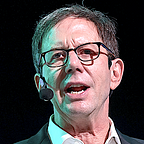A President for the 21st Century: Applying Design Thinking
In these tumultuous times, as the United States confronts an increasingly complex world, we find ourselves yearning for a leader who possesses not only the cherished qualities of honesty, integrity, and empathy, but also the capacity to navigate unprecedented challenges. As we ponder the type of President we need, the principles of design thinking offer us a valuable framework for envisioning a leader who can inspire confidence, trust, and hope for a brighter future.
At its core, design thinking is an iterative, human-centered approach that identifies and creatively solves problems faced by end users. It comprises five essential steps: empathize, define, ideate, prototype, and test. Applying this lens to the selection of our President, we can begin by empathizing with the needs, wants, and fears of the American people, imagining an avatar that represents our collective aspirations.
Empathize
To truly empathize, we must delve into the desires of the American public. We yearn for a President we can trust and respect, someone who not only ensures our safety but also embodies our values on the global stage. We seek a leader who prioritizes the needs of our citizens, tirelessly striving to build a more just and equitable society. Most importantly, we crave a President who fills us with pride rather than embarrassment.
Define
Having empathized with our collective desires, we can then define the problem at hand: a crisis of leadership. In these uncertain times, we urgently require a President who can effectively navigate various crises, from global pandemics and economic downturns to foreign conflicts and domestic unrest. The current political climate, marred by division and fear, calls for a unifying figure who can inspire us and guide us towards a better future.
Ideate
With the problem defined, we can now move to ideation, envisioning the qualities and characteristics our ideal President must possess. Honesty stands as a paramount attribute, as it forms the bedrock of trust between leaders and the American people. Our President must be forthright, even if that means exercising discretion when national security is at stake. Moreover, intelligence, innovation, and the ability to generate novel solutions to complex challenges are essential. A wise President, capable of prioritizing actions based on their relative importance, is also crucial. Finally, we need a leader who is pragmatic, adept at garnering bipartisan support to effect real change.
Prototype
Having identified these traits, we can then create a prototype, seeking out individuals who embody the qualities we desire. Our prototype President must possess effective communication skills, fostering trust not only among the American people but also among world leaders. They must navigate the complexities of geopolitics and demonstrate genuine empathy for marginalized communities, working tirelessly to rectify systemic injustices.
Test
Lastly, we must subject our potential candidates to rigorous testing, examining their track records in leadership, innovation, and integrity. By evaluating them against the criteria we have established, we can discern the individuals who best meet the demands of our prototype.
In conclusion, the United States is in dire need of a President who can lead us through the challenges of the 21st century with honesty, integrity, and innovative thinking. Applying design thinking principles allows us to empathize with the needs and wants of the American people, define the problems we face, ideate solutions, prototype a leader who embodies our aspirations, and ultimately test the candidates who come forth.
As we navigate the complexities of our modern world, let us come together in our quest for a leader who can unite, inspire, and guide us towards a brighter future. The American people deserve nothing less.
